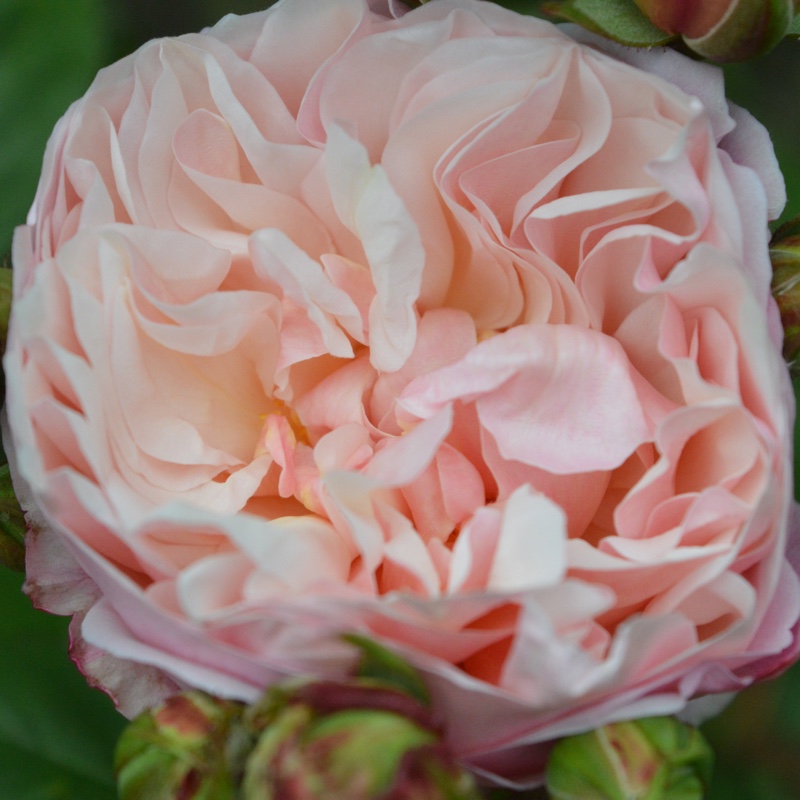
Rosa 'Pink Gruss an Aachen' syn. Rosa 'Irene Watts'
Rose 'Pink Gruss an Aachen' (Floribunda)
The modern Floribunda roses are a cross between the dwarf polyantha rose and the early hybrid tea roses. Hardy deciduous shrubs with stems more branched than those of the hybrid teas and variably prickly with hooked thorns. Flowers may be single, double or semi-double and are borne in large terminal clusters during mid-summer and usually again in late summer. A few are fragrant. 'Pink Gruss an Aachen' is a floribunda rose with orange salmon pink double flowers and a mild fragrance. It is often mis-sold as a cultivar called 'Irene Watts', which is in fact an old China Rose but the latter is thought to now be lost and extinct in cultivation. All commercially labelled plants called 'Irene Watts' and most likely to be 'Pink Gruss an Aachen'.
Contributed by @lauraloves
-
Full sun
-
Occasional watering
-
Full Frost Hardy: 5F (-15°C)
-
Rich and free draining
Common name
Rose 'Pink Gruss an Aachen' (Floribunda)
Latin name
Rosa 'Pink Gruss an Aachen' syn. Rosa 'Irene Watts'
type
Deciduous Perennial
family
Rosaceae
ph
5.0 - 8.0 Acid - Neutral
Plant & bloom calendar
-
Best time to plant
full grown dimensions
 0.50 M
0.90 M
0.50 M
0.90 M
Rosa 'Pink Gruss an Aachen' syn. Rosa 'Irene Watts'
The modern Floribunda roses are a cross between the dwarf polyantha rose and the early hybrid tea roses. Hardy deciduous shrubs with stems more branched than those of the hybrid teas and variably prickly with hooked thorns. Flowers may be single, double or semi-double and are borne in large terminal clusters during mid-summer and usually again in late summer. A few are fragrant. 'Pink Gruss an Aachen' is a floribunda rose with orange salmon pink double flowers and a mild fragrance. It is often mis-sold as a cultivar called 'Irene Watts', which is in fact an old China Rose but the latter is thought to now be lost and extinct in cultivation. All commercially labelled plants called 'Irene Watts' and most likely to be 'Pink Gruss an Aachen'.
Planting
From Late Autumn TO Late Spring
Prepare the planting site by digging over the bed and incorporate liberal quantities of well rotted manure or compost; lighten heavy clay soil with half rotted straw. Dress the top soil with plenty of peat mixed with hop manure and chopped up turf. Fresh animal manure is harmful to the roots and should only be used in the bottom spit. Where possible, prepare the planting site a few weeks in advance. Do this in late summer for planting in autumn. Plant at any time between late autumn and late spring. Prepare a planting mixture of bone meal and moist peat. Spread out the roots in the planting hole and add the planting mixture until the roots are covered. Add soil and firm in the plant by treading.








